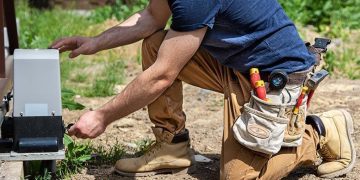Applying principles from Applied Behavior Analysis (ABA) in schools can help students with autism develop communication, academic, and social skills in an environment where they spend a significant portion of their day. Many educators across California are learning how to integrate ABA methods to create structured, supportive classrooms that encourage progress for every student.
Effective integration of ABA methods is a necessary aspect of California school-based autism support, helping students succeed through clear expectations, positive reinforcement, and individualized instruction.
Setting Clear Expectations and Structure
Students with autism often thrive in environments that are predictable. Classrooms that use clear routines and consistent visual supports make daily activities easier to understand. Teachers can post visual schedules or step-by-step charts that outline daily activities, helping students transition smoothly from one activity to another.
Consistent structure also benefits classmates and teachers by keeping lessons organized and reducing confusion.
Using Positive Reinforcement
Positive reinforcement is a fundamental principle of ABA. In a classroom, it means recognizing and rewarding desired behavior instead of focusing mainly on correcting challenges. For example, a teacher might praise a student for raising their hand or staying on task, or provide a brief break as a reward for completing an assignment.
Reinforcement helps students associate learning with positive experiences. Over time, these responses build motivation and confidence.
Breaking Down Skills into Manageable Steps
Some classroom tasks can feel overwhelming to students with autism if presented all at once. ABA strategies encourage teachers to break skills into smaller, teachable parts. For instance, a writing task might start with tracing letters before moving to full sentences.
This gradual approach makes learning more accessible and allows teachers to celebrate small successes along the way. Breaking down skills also helps identify where a student might need more support, so educators can adjust their teaching methods accordingly.
Data-Driven Decision Making
Recording and reviewing data are central parts of ABA. When teachers collect information on how students respond to specific strategies, they gain insight into what truly helps each child learn. Data might include how often a student completes tasks independently, participates in group activities, or follows directions.
By using this information, schools can refine instructional methods and provide personalized California school-based autism support that reflects measurable progress.
Collaboration Between Teachers and Behavior Specialists
Some schools in California partner with behavior specialists, also known as Board Certified Behavior Analysts (BCBAs), to help effectively implement ABA strategies.
Teachers bring valuable classroom experience, while behavior specialists provide expertise in behavioral assessment and intervention. Together, they can develop plans that address both academic and behavioral needs without disrupting the classroom flow.
Promoting Peer Interaction and Social Skills
ABA strategies can support social development in group environments. Teachers can create structured opportunities for students with autism to engage with their peers during small-group lessons, games, or collaborative projects. Activities like sharing materials, taking turns, or helping a classmate promote cooperation and communication.
Educators can also model appropriate behavior, giving clear examples of how to greet someone, ask for help, or express feelings respectfully. Over time, consistent practice of these skills builds confidence and improves relationships among students.
Training and Consistency Among Staff
Successful ABA implementation depends on staff understanding and consistency. Every adult who works with a student should be familiar with the same strategies and expectations. Schools that provide ongoing training help staff respond to behaviors in predictable ways, which supports learning and stability.
Training sessions can also include practical topics such as:
- How to use reinforcement schedules effectively
- Collecting and recording behavior data accurately
- Communicating with families about student progress
- Coordinating strategies between classrooms and home settings
Connecting Families to Educational Resources
Strong partnerships between schools and families are essential for continued progress. Sharing progress reports, behavior plans, and classroom strategies helps families apply similar techniques at home.
Teachers and administrators can guide families toward reliable California autism education resources, including regional centers, parent workshops, and state-supported training materials.
Final Thoughts
Integrating ABA strategies into classrooms helps create structured, positive learning environments for students with autism. Teachers who utilize these evidence-based methods can enhance focus, participation, and independence while fostering emotional growth.
By combining data-driven instruction, collaboration, and communication, California educators can strengthen inclusive learning environments that reflect the best practices in ABA. With the proper structure and access to California autism education resources, schools can provide consistent support that helps every student reach their potential.














































